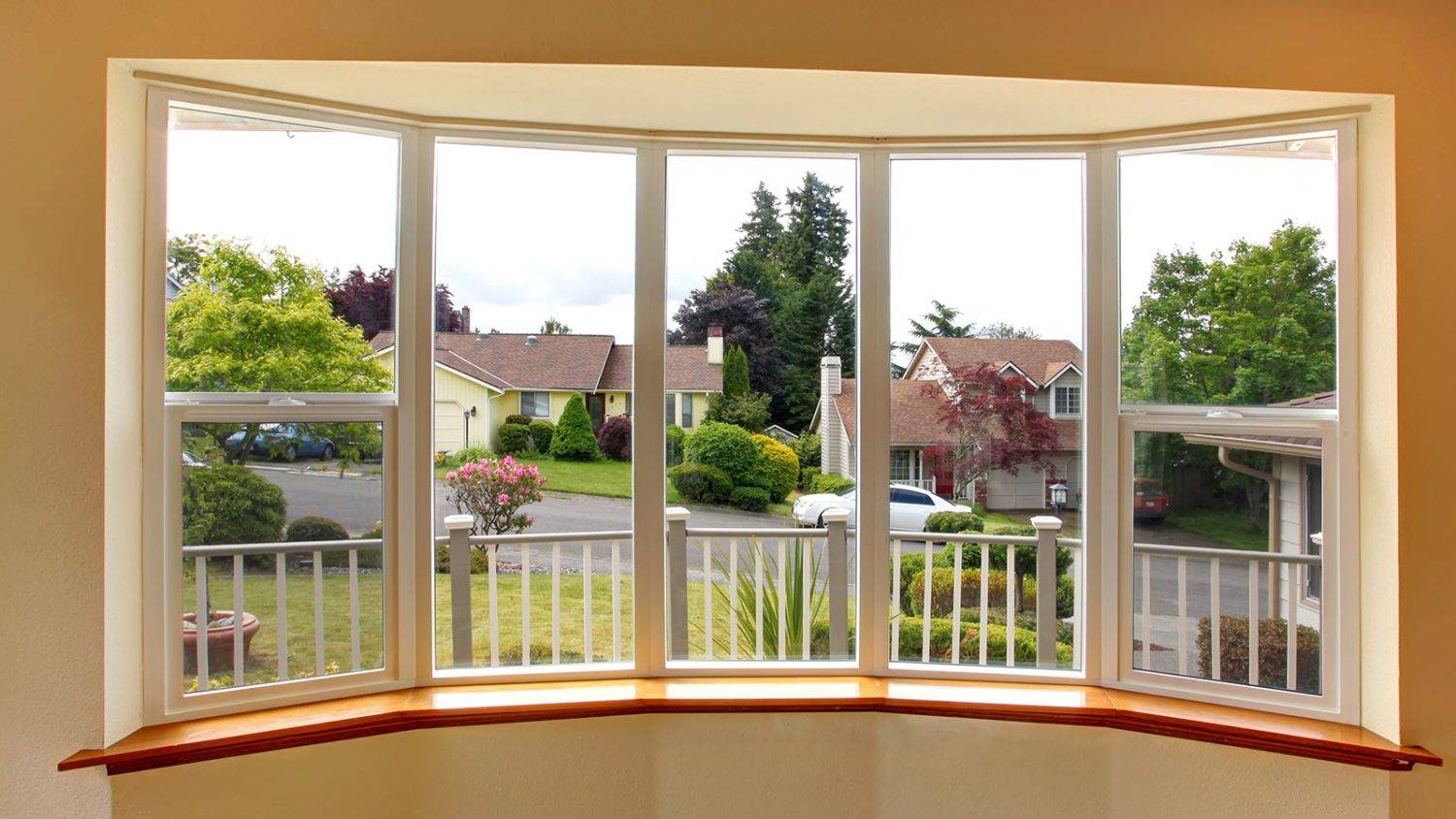Mulled Windows: Comprehensive Guide for Homeowners, Architects & Contractors
- PA Home
In recent years, mulled windows have been gaining popularity in both residential and commercial building projects. These windows offer a unique solution to homeowners and builders looking to enhance the aesthetics, natural lighting, and energy efficiency of their spaces. Whether for large-scale developments or home renovations, mulled windows can provide an excellent balance between design flexibility and functionality. In this guide, we’ll explore the benefits, installation processes, types, materials, and more, so you can decide if mulled windows are the right fit for your project.
What Are Mulled Windows?
Mulled windows are created by joining multiple window units together into a single frame, often to cover a larger opening. These windows are especially popular in homes or buildings where expansive views and enhanced natural lighting are desired.
Key Terms Defined:
Window Mulling: The process of connecting individual window units together to create a larger, more uniform opening.
Factory Mulling vs. Field Mulling: Factory mulling involves assembling windows before they are delivered to the site, while field mulling takes place during installation.
Common window types used for mulling include double-hung windows, casement windows, and picture windows, offering a wide range of design possibilities.

Key Advantages of Mulled Windows for Homeowners and Builders
Enhanced Aesthetics and Curb Appeal
Mulling windows create visually striking installations, adding a modern and sophisticated touch to any home or commercial project. With their seamless appearance, they can significantly improve curb appeal.
Improved Energy Efficiency
By reducing the gaps between individual windows, mulling windows provide better sealing, enhancing insulation and reducing energy loss. This results in lower heating and cooling costs.
Increased Natural Lighting and Expansive Views
The combination of multiple windows allows for more light to enter a space, giving rooms a brighter, more open feel. These larger windows also offer more expansive views of the surrounding environment.
Higher Property Value and Market Appeal
The aesthetic appeal and energy efficiency of mulled windows can increase the value of your property, making it more attractive to potential buyers or tenants.
Potential Drawbacks of Mulled Windows You Should Be Aware Of
Complexity of Installation
Installing mulled window requires skilled professionals. The precise measurements and heavy lifting involved can be challenging for inexperienced installers.
Higher Initial Costs
Due to the additional labor and materials required, mulled window can be more expensive than traditional window installations, which may increase your initial investment.
Structural Support and Weight Limitations
Since mulled windows are larger and heavier, structural modifications may be required to support the added weight. This consideration is essential in both new construction and renovations.
What Are the Types of Mulled Windows?
Mulled window can be customized to fit a variety of design styles and functional needs. Below, we explore the different types of mulled windows commonly used in both residential and commercial projects, each offering unique features and benefits:
1. Double-Hung Windows
Double-hung windows are one of the most popular types used in mulled configurations. These windows consist of two vertically sliding sashes that allow for optimal ventilation. The flexibility to open both the top and bottom of the window makes them perfect for spaces that require airflow, such as living rooms, kitchens, and bedrooms.
2. Casement Windows
Casement windows are hinged at the side and open outward, offering a wide and unobstructed view. When mulled with other windows, they can create a seamless transition from room to room or enhance the exterior appearance of a home. Casement windows provide excellent ventilation, especially when opened fully.
3. Picture Windows
Picture windows(someone also called fixed windows) are large, fixed windows that do not open. They are often used as part of mulled window configurations to offer expansive, uninterrupted views of the outdoors. When combined with operable windows, picture windows allow for a dramatic increase in natural light without compromising ventilation.
4. Bay & Bow Windows
Bow and bay windows are mulled window configurations that protrude outward from the wall, forming a curved or angular shape. Bay windows consist of three windows (often a large center picture window with two smaller side windows), while bow windows use four or more windows to create a rounded effect. Both types enhance the feeling of spaciousness and offer a unique architectural feature.
5. Sliding Windows
Sliding windows feature one fixed panel and one that slides horizontally. They are typically easier to operate and are ideal for spaces where a swinging window might be impractical, such as near walkways or patios. When mulled with other sliding windows or different window styles, they create a sleek and modern appearance.
6. Awning Windows
Awning windows are hinged at the top and open outward, allowing fresh air to enter even during rainy weather. When mulled with other window types, they can create interesting architectural compositions. These windows are especially popular in areas where you want ventilation but also need protection from the elements.
7. Transom Windows
Transom windows are small, often decorative windows placed above larger windows or doors. While they don’t typically open, they can be mulled with larger fixed or operable windows to add architectural flair. Transoms are commonly used in both traditional and modern designs to bring additional light and aesthetic value to a room.
What Are the Materials of Mulled Windows?
Mulled windows can be made from a variety of materials, each offering distinct advantages:
| Material | Cost | Best For | Description & Advantages |
|---|---|---|---|
| Wood | Moderate to High | Traditional Residential, Luxury Custom Builds | Classic, customizable, and provides excellent insulation. |
| Vinyl | Low | Budget-Friendly Residential Renovations | Durable, low-maintenance, and energy-efficient. |
| Aluminum | Moderate | Commercial Applications, Modern Buildings | Strong and durable with a sleek, industrial look. |
| Fiberglass | Higher Upfront, Long-Term Savings | High-Performance Residential & Commercial Projects | Highly energy-efficient and temperature resistant with low maintenance. |
Factory Mulling vs. Field Mulling: Choosing the Right Option
Factory Mulling
This process involves assembling multiple window units in the factory, ensuring precise alignment and quality assurance before delivery. Factory mulling is ideal for large-scale commercial projects where consistency and quality control are essential. However, it may be less flexible for custom designs or field adjustments.
Field Mulling
Field mulling occurs during installation, allowing for more flexibility and customization on-site. This method may be more cost-effective, especially for residential projects, but it requires more time and skilled labor to ensure proper installation and alignment.
Recommendations:
- 🏢For Large Commercial Projects:Factory mulling is preferred for its efficiency and quality assurance.
- 🏠For Residential Renovations or Custom Builds:Field mulling offers more flexibility and adaptability to the specific needs of the space.
How to Install Mulled Windows
Essential Preparation Checklist:
Measuring the Space: Accurate measurements of the window opening are essential for a proper fit.
Structural Assessment: Ensure the wall can support the weight of mulled windows, especially for large or multi-unit installations.
Permits and Codes: Always check local building codes and obtain necessary permits before starting installation.
Installation Process:
Prepare the Opening: Clear the area and ensure the opening is level and properly framed.
Position the Mulled Window Unit: Lift and position the mulled window unit into the opening.
Secure the Window: Use fasteners to attach the window securely to the frame, ensuring that the window is level and square.
Seal and Insulate: Apply appropriate sealing materials around the edges to prevent drafts and ensure energy efficiency.
Common Pitfalls to Avoid:
- 📏Improper Measurements:Ensure accurate measurements to avoid gaps or misalignment.
- 🏗️Insufficient Structural Support:Verify the framing can handle the added weight of mulled windows.
How Much Are Mulled Windows?
The cost of mulled windows depends on several factors, including:
Material: Wood and fiberglass windows tend to be more expensive than vinyl or aluminum.
Size and Configuration: Larger and more complex configurations will cost more.
Labor Costs: Professional installation can add significantly to the overall cost.
On average, you can expect mulled windows to cost anywhere from $500 to $2,000 per unit, with larger or custom options increasing the price.
Common Concerns
Are mulled windows more expensive?
Are Mulled Windows Worth the Value?
Mulling windows can provide excellent value, especially for those seeking to enhance the aesthetics, energy efficiency, and overall appeal of a space. They are especially beneficial for larger homes or commercial buildings where maximizing natural light and improving curb appeal are priorities. However, the higher initial cost and complexity of installation should be weighed against your budget and long-term goals.
Design Inspiration: Creative Ideas Using Mulled Windows
Mulling window offers endless design possibilities for both contemporary and traditional homes. Here are some ideas to consider:
Living Rooms: Use mulled windows to create expansive, uninterrupted views of the outdoors.
Kitchens: Install a combination of picture windows and casement windows to maximize natural light while maintaining ventilation.
Bedrooms: Consider a bay window configuration for a cozy reading nook with a beautiful view.
By using mulled window creatively, you can enhance the functionality and aesthetic appeal of any room in your home.
Choosing the Best Mulled Window Manufacturer for Your Project
When selecting a mulled window manufacturer, it’s essential to evaluate their reputation, product quality, and customer service. Key considerations include:
Reputation: Look for manufacturers known for delivering high-quality, durable products.
Product Range: Choose a provider with various window types and customization options.
Customer Support: Ensure they offer strong post-purchase support, including warranties and installation assistance.
Conclusion: Are Mulled Windows the Right Choice for You?
Mulling windows provide numerous benefits, including enhanced aesthetics, increased natural light, and better energy efficiency. While they can be more costly and complex to install, the long-term value they offer makes them a solid choice for homeowners, architects, and contractors looking to enhance their projects. Evaluate your specific needs, budget, and design goals to determine if mulled windows are the right fit for you.
Consider consulting with a trusted mulled windows manufacturer to explore options and ensure the best results for your project. PA Window is top 10 window manufacturers in China, you can contact PA to get a quickly respond.
FAQs about Mulled Windows
Can existing windows be mulled, or must they be new?
Is mulling window energy-efficient?
Do mulled windows require special structural changes?
What does mulled window mean?
What are double mulled windows?
How to tell if windows are mulled?
What are the disadvantages of mulled windows?
Mulled vs Non-Mulled Windows – Which is Better?



